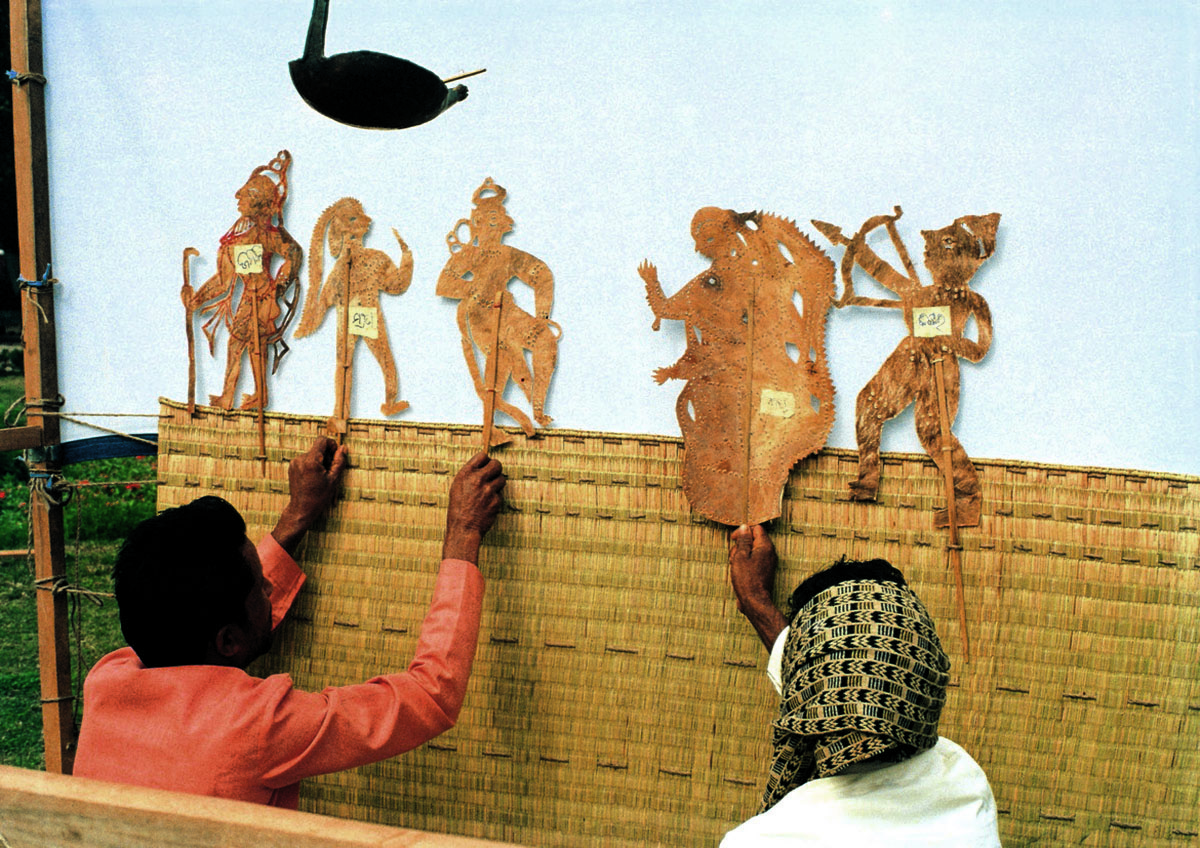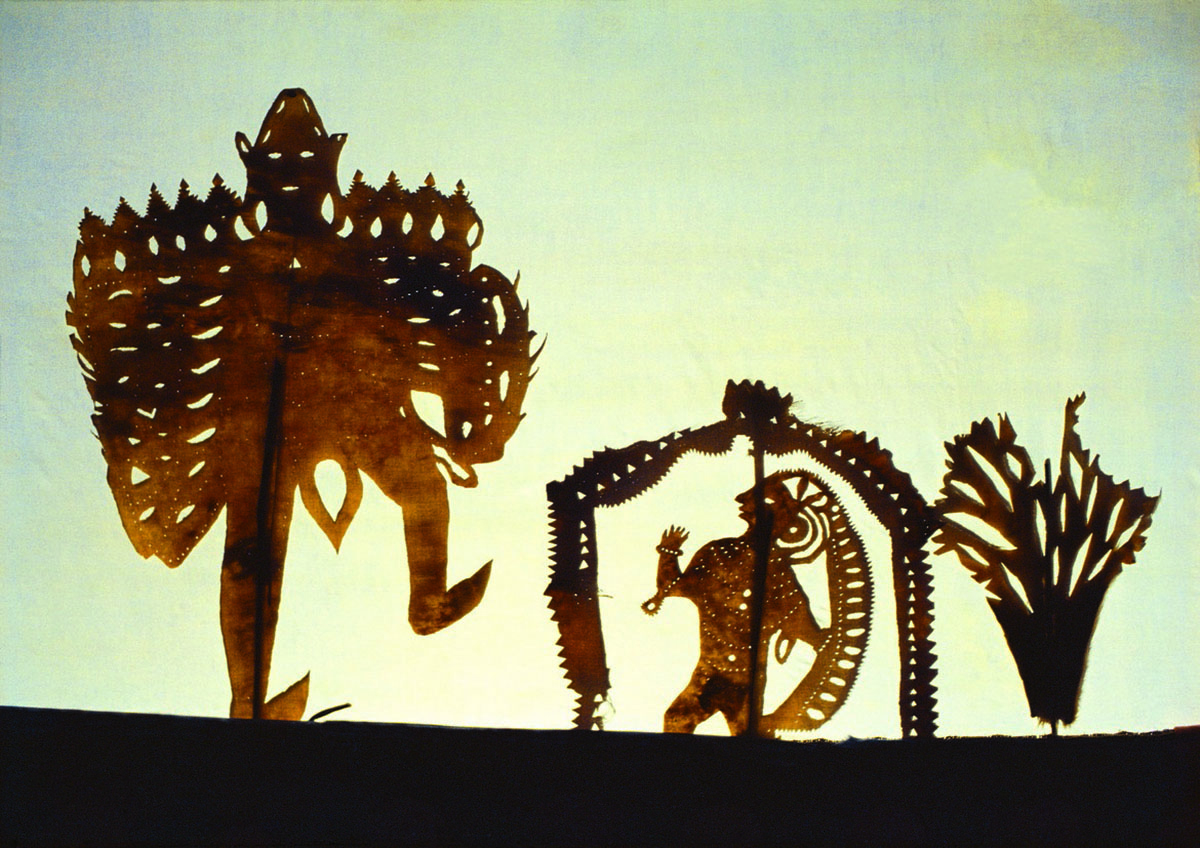ARTICLE
Ravana Chhaya
Found in the state of Odisha, Ravana chhaya is a shadow puppetry tradition that narrates stories from the Ramayana. During the nineteenth and early twentieth century, Ravana chhaya performances were especially popular in the Dhenkanal and Talcher regions of Odisha and even enjoyed the patronage of the royal family of Talcher.
The history of Ravana chhaya remains unclear, with different scholars offering different theories regarding its origins. Some have traced its roots to the third century BCE, while some have attempted to date it by tracing it as an influence on wayang kulit, the shadow puppetry tradition of Indonesia, which dates back to before the tenth century CE. Some scholars have speculated that the name of the puppetry form reflects the influence of Jainism and Buddhism, as certain historical texts within these religious traditions portray Ravana in a less antagonistic light. According to the puppeteers, however, the name Ravana Chhaya was chosen as it is believed that the protagonist of the stories, Rama, does not cast a shadow. While regional texts from the fifteenth to the eighteenth century do not explicitly mention Ravana chhaya, they do carry references to chhaya natak or “shadow puppetry.”
Traditionally, Ravana chhaya was performed by the non-dominant, nomadic Charan caste, who worked as travelling bards (or bhata) and performed for wealthy individuals and families. Despite its primarily religious repertory, the performance of Ravana chhaya was not restricted to temples and it was a popular form of folk theatre. Scholars have noted that sometime in the twentieth century, the Vichitra Ramayana – composed by Odia poet Vishwanath Kunthia in the late seventeenth and early eighteenth centuries – was adopted as the primary source text of Ravana chhaya. Written in the chhanda form, the text is composed of lyrical verses that are sung using a combination of classical and folk music. There is little information on the repertory of Ravana chhaya prior to the adoption of the Vichitra Ramayana.
The puppets of Ravana chhaya puppets are small in size – ranging from 6 inches to 18 inches in height – and cast opaque shadows, similar to the puppets of Kerala’s tholpavakoothu. Perforations are used to create facial characteristics and detail the costumes and ornamentation. They are made of untanned deer hide and are not articulated. Instead, their movements are depicted through simple gestures. A bamboo split is attached vertically along the centre of the puppet, which allows the puppeteer to both keep it stable and manipulate it. A standard Ravana chhaya ensemble may include multiple versions of characters, scenic elements, animal figures and composite puppets. A retelling of the entire Ramayana can require up to seven hundred puppets.
A Ravana chhaya troupe includes a lead singer and narrator (who is usually also the group leader), puppeteers and musicians who play the khanjani (a percussion instrument, similar in structure to a daf but smaller in size) and daskathi (wooden castanets). The stage is cube-shaped and set up using bamboo poles, a long, white cloth and thick straw mats. The white cloth, nearly 8 feet in length, serves as the screen while the mats below the screen conceal the puppeteers. The traditional light source was an oil lamp fastened to a bamboo stick pegged into the ground about a foot from the curtain. In contemporary practice, an electric light, such as a bulb, is used. Two or three puppeteers manipulate the figures behind the stage and voice the prose dialogues. The songs are sung by the musicians and singers who sit in front of the screen.
A Ravana chhaya show begins with a ritual prayer devoted to Rama and Ganesha, after which the narrator performs a musical prelude on the khanjani and introduces the episodes of the show. The play begins with a comic skit by two characters – a grandfather and grandson barber duo – after which the main story is performed.
For years, Ravana chhaya was a form of entertainment in several villages across Odisha, such as Seepur, Athamallik, Bhaluki, Kishore Nagar and Odash. However, it remained largely unknown outside the state. This changed in the 1970s, when the Sangeet Natak Akademi took up the project of formally studying it and training the puppeteers. This project gave Ravana chhaya a national platform, bringing with it attempts to modify the structure of puppetry tradition to suit a wider audience. In the 1980s, prominent Odia cultural figures such as director Gobind Tej and composer Shantanu Mohapatra worked with the Odash troupe to contemporise performance settings and structure, experimenting with newer musical settings, stage set-ups, and puppet designs influenced by pattachitra painting.
The practice of Ravana chhaya was concentrated in Odash, primarily due to the presence of the noted artiste Kathinanda Das, who was acclaimed for his mastery in all aspects of it. Das’ disciple, Kolhacharan Sahu, was also a noted exponent. Today, there are two notable organisations working to keep Ravana chhaya alive – the Ravana Chhaya Natya Sangha in Odash, which practises the traditional repertory. Another troupe, known as the Shrirama Institute of Shadow Theatre in Kutarimunda, was established by scholar Gouranga Dash and uses Ravana chhaya to stage performances on more contemporary themes.
Bibliography
Our website is currently undergoing maintenance and re-design, due to which we have had to take down some of our bibliographies. While these will be re-published shortly, you can request references for specific articles by writing to hellomapacademy@map-india.org.








